AKG K371
AKG K371 - A pragmatic headphone tuned close to the most popular sound profile
I believe both the AKG K361 and K371 are ultimately the brain child of the work of Dr Sean Olive Harman research and the quest to use measurement to create a pragmatically cost-effective headphone with a natural appealing sound. Before purchasing the K371 I looked at both models and given the K371 has more bass I decided it would be easy (and has less to have any distortion) to EQ down higher bass on the K371 than increase the gain in the EQ to give the K361 more bass. But otherwise both these headphones are very similar.
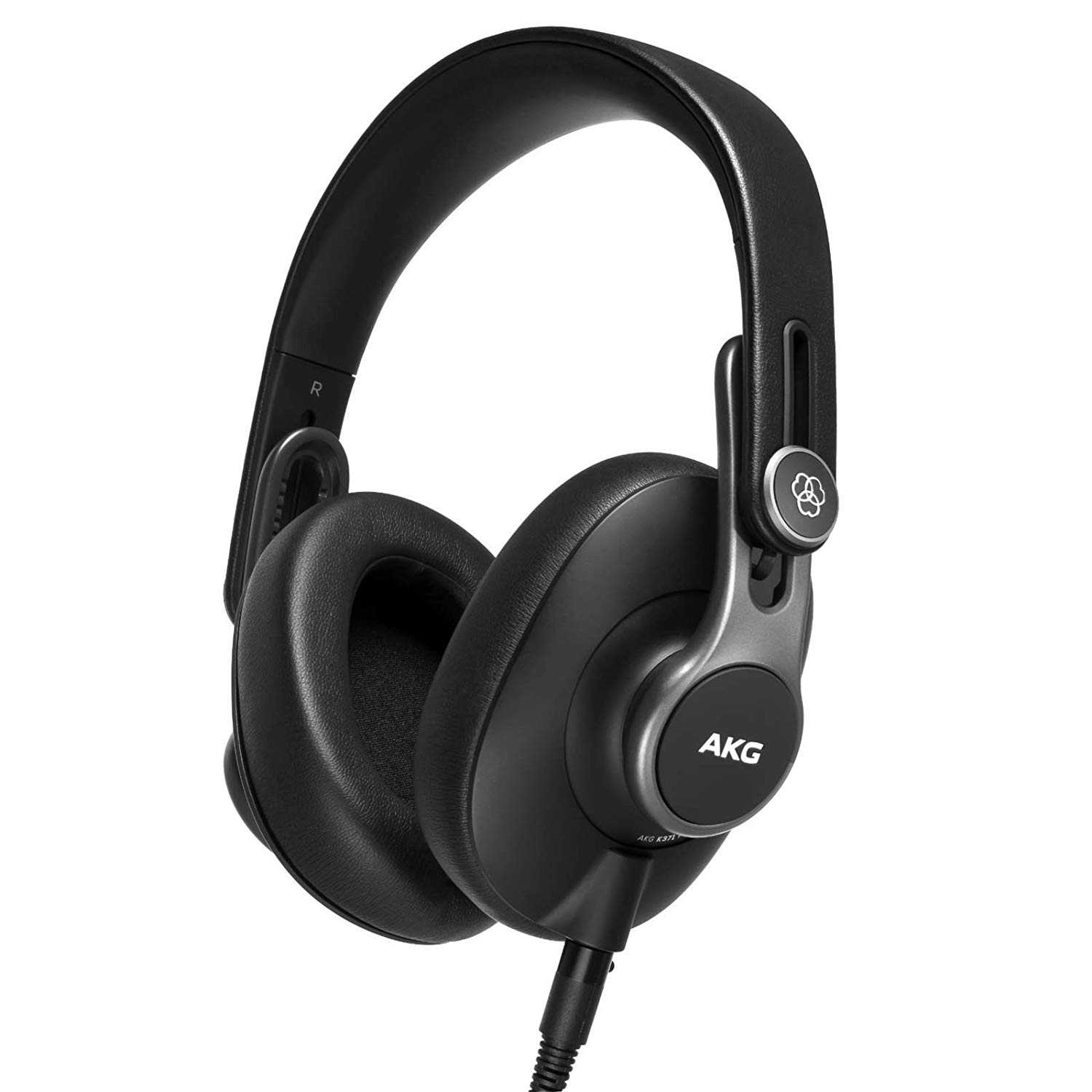
So both model’s represents AKG’s endeavor to blend studio-quality sound with practicality and comfort for extended use. A key
aspect of Dr Olive research was to come up with an optimal headphone target for the majority of people.
This review aims to dissect the nuances of this audio performance, the headphones build quality, comfort, and value for money,
providing a clear understanding of where each model stands in the competitive landscape of professional-grade headphones.
Let’s delve into the specifics to ascertain if the K371 (or the K361) emerges as the right choice for you.
What’s in the box
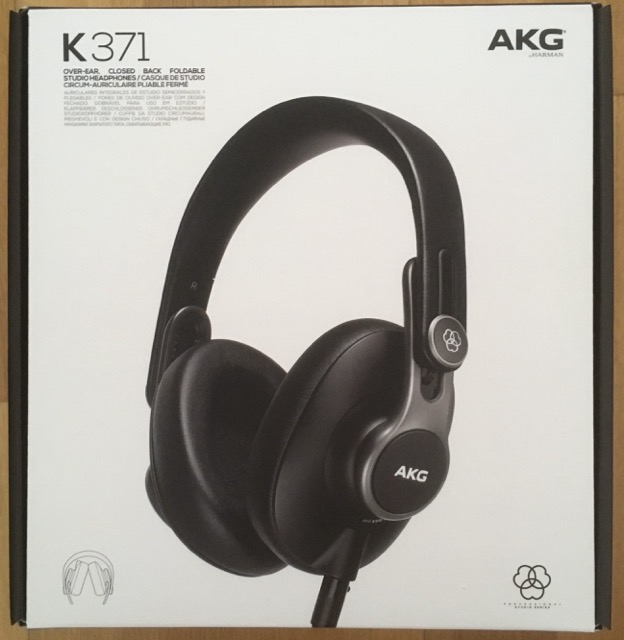
Compared to the competition AKG were very generous with the accessories provided:
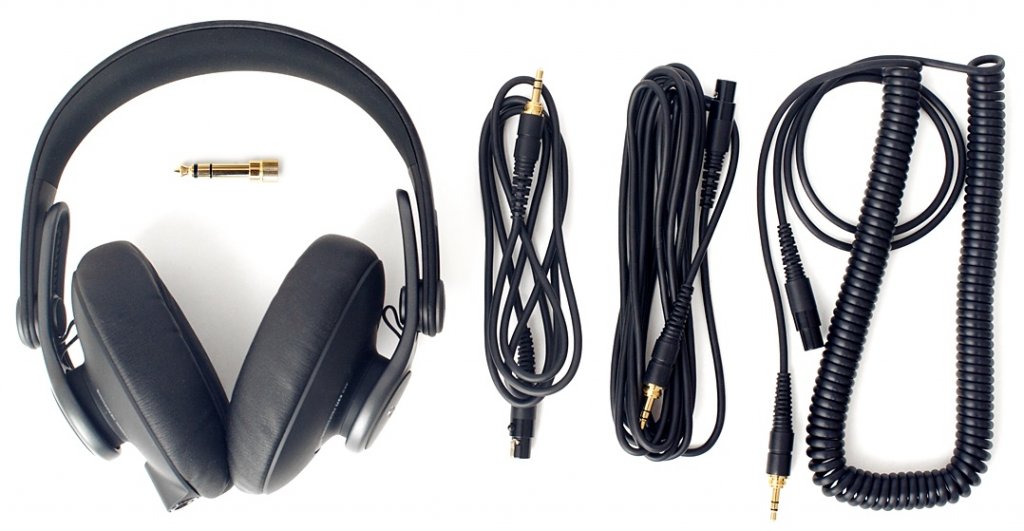
As well as a simple carry bag you get 3 different cables all using the typical AKG mini-XLR connector.
Specifically, there is a coiled cable, ideal for studio work where freedom of movement is essential without the risk of overextension or tangling. For everyday use and mobility, a shorter 4 foot straight cable is provided, suitable for connecting to portable devices or computers without excess length getting in the way. Lastly, a longer 10 foot straight cable offers the flexibility needed for situations where the audio source is not within immediate reach, allowing for comfortable listening without compromising on movement.
Finally, you also get an 3.5mm to 5.5mm adapter.
The Headphone
Both the K361 and K371 (and their Bluetooth variants K361-BT / K371-BT) share the same design:
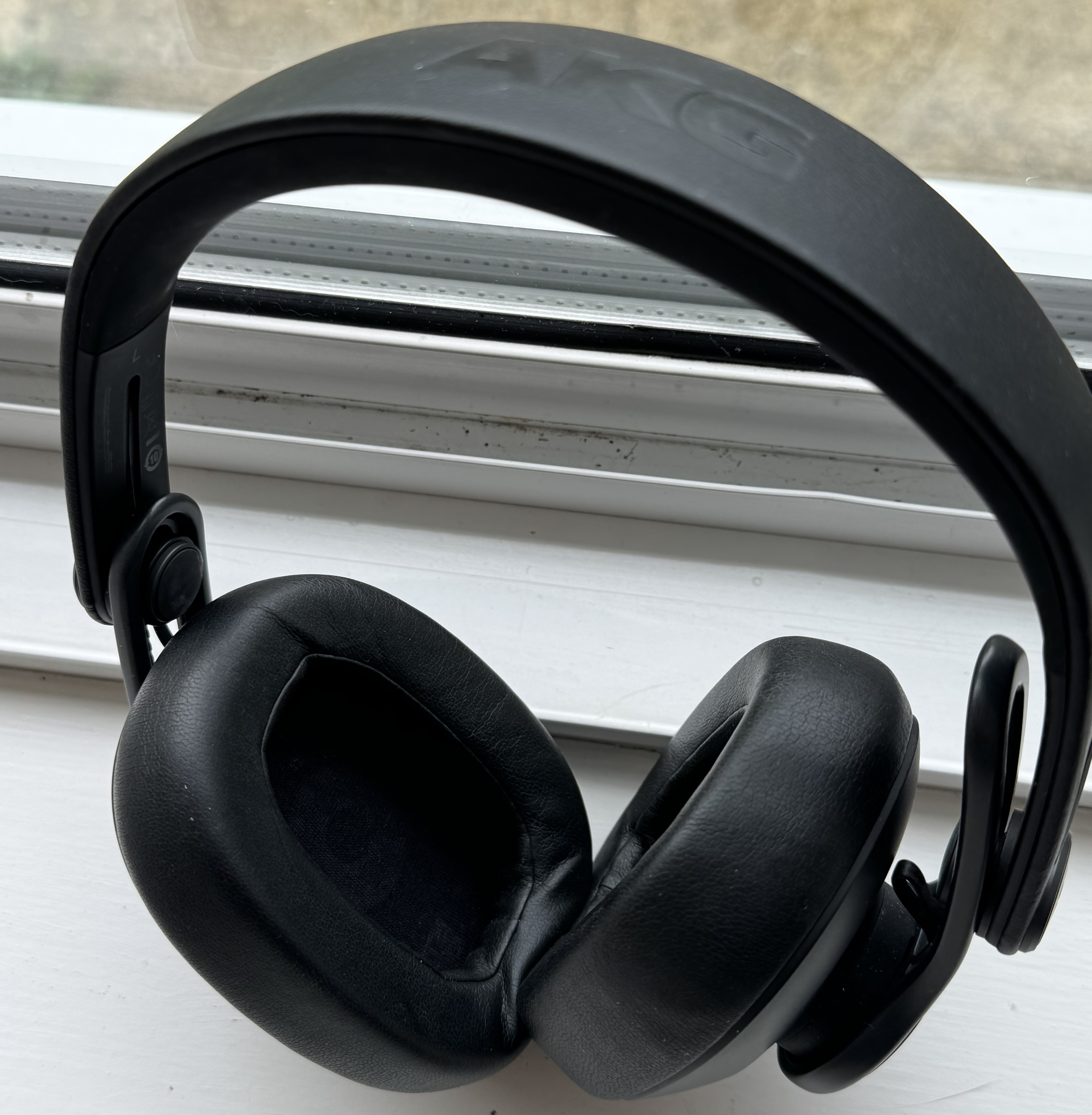
The black matte finish of the headphones is complemented by subtle silver accents, presenting a professional look that is equally at home in the studio as it is in public settings. The ear cups’ fold able design enhances portability, allowing the K371 to be easily packed away for travel or storage without compromising space. This thoughtful design extends to the adjustable headband and swiveling ear cups,
Ear pads
I found the pleather ear-pads to be very comfortable for long listening session with no issue with getting too hot
on my ears. I found they had the right level of compression and never felt ‘cheap’. They were just about big enough
for my ears to be considered ‘over ears’, but I do prefer the even larger egg shaped ear pads of the higher end
hifiman headphones. Still in this price range I thought they were excellent:
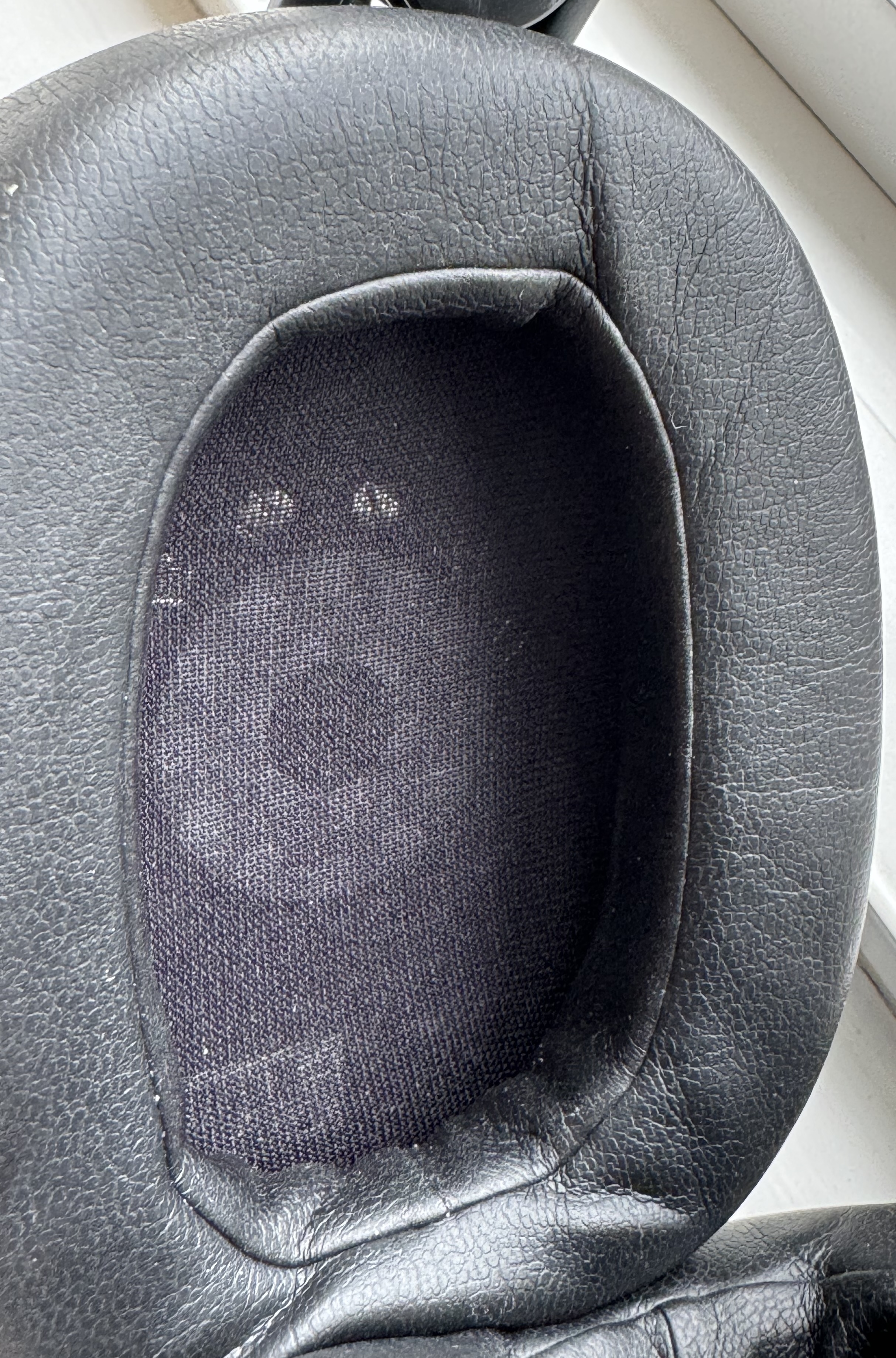
Fit, Comfort and Feel
These headphones are designed with ergonomics in mind, featuring an over-ear, closed-back design that ensures a snug, yet comfortable fit around most ears. I did find the earcups a little smaller than I would have liked but for the majority of people this is a perfect size, and they are very comfortable. The pleather ear pads play a pivotal role in this comfort, providing a soft, cushion-like barrier that reduces ear fatigue during extended listening sessions. This material choice not only enhances the comfort but also contributes to the headphones’ passive noise isolation, creating an intimate listening environment by effectively blocking out external noises.
The headband’s adjustable nature and the ear pads’ plush feel further ensure that users can enjoy long periods of use without discomfort, making the K371 an excellent choice for professionals and audiophiles who demand both superior sound quality and lasting comfort.
Mini-XLR connector
While I personally would have like dual 3.5mm connectors in each ear, I can understand the appeal of a 3-pin mini-XLR
connector one ear to make it easier to use these as mixing headphones:
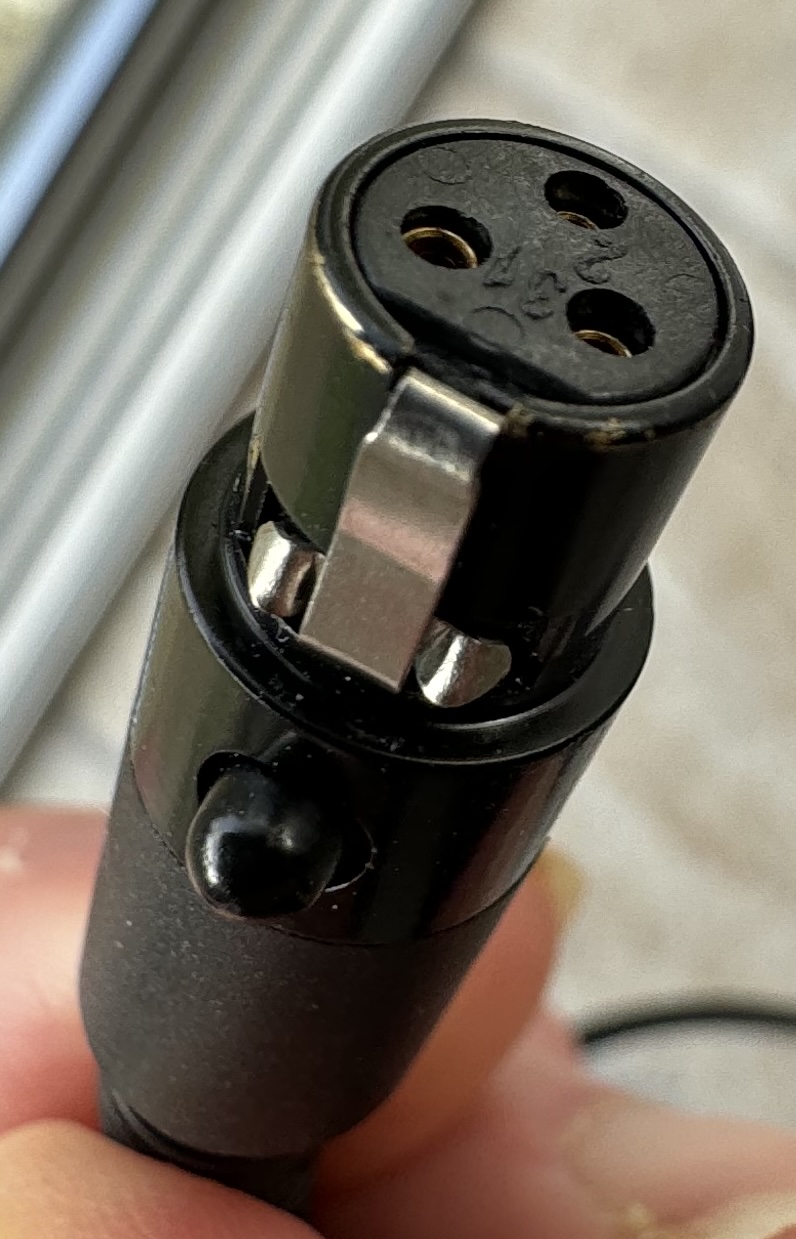
The overall mechanism is solid with a very solid connector connection and no worry that the connection would get
loose:
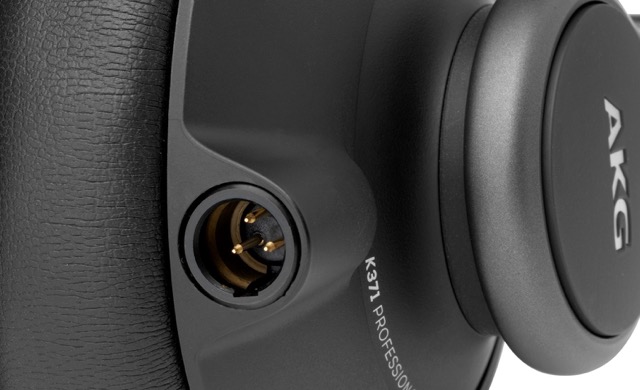
But one slight problem I noticed was that mini-XLR is ‘rigid’ and when it extends significantly down vertically
below the left hand ear it does cause the cable wire to brush up against my shoulder if I move my head too
far to the left, this cause the left earcup to come unseated:
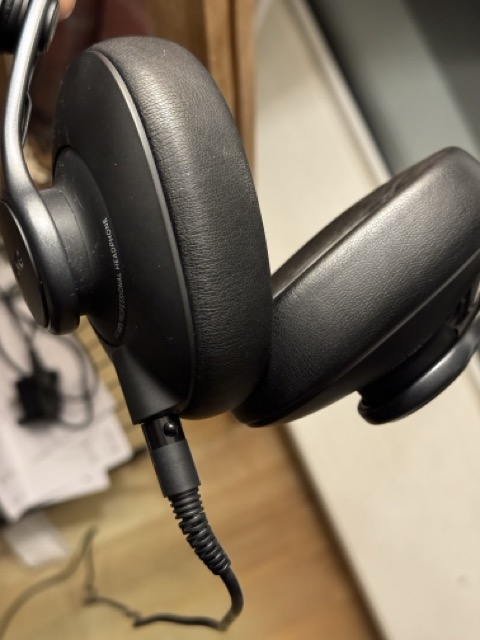
It is a minor complaint but most of my other headphones either have angled connectors or at least their cable is flexible.
Swivel Mechanism
One very nice feature of this design is the swivel / folding mechanism to allow easy storage for the K371 when
travelling.
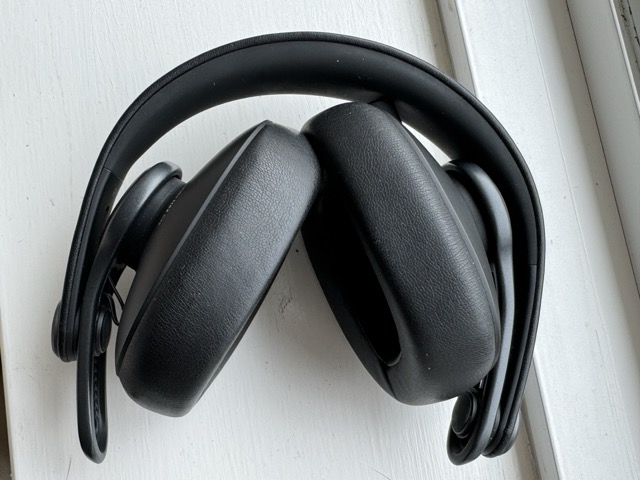
While initially I was skeptical as to would this loosen over time it has stayed solid for the past year on many trips, so I believe it is a solid design.
Listening and Sound impressions
The K371s are tuned to closely follow the Harman target curve, but with a little more bass, which caters to a broad range of genres and listening preferences. Let’s delve into the specifics of their sound profile, highlighting each aspect with reference to a classic audiophile track.
Bass Response
The AKG K371’s bass response is noteworthy for its depth and clarity, offering a robust foundation without overwhelming the rest of the sound spectrum. This slight elevation in bass lends a warm and engaging listening experience, perfect for tracks that benefit from a fuller low-end. A classic track to demonstrate this is “Billie Jean” by Michael Jackson. The opening bassline in this song is rendered with precision and punch, showcasing the K371’s ability to deliver a controlled yet impactful bass that complements the track’s rhythmic drive.
Midrange
In the midrange, the K371 presents a clear, detailed, and well-balanced reproduction, ensuring vocals and instruments are rendered with natural tonality and presence. Joni Mitchell’s “A Case of You” provides an excellent showcase for this midrange fidelity, as Mitchell’s distinctive vocal timbre and the nuanced acoustic guitar are both conveyed with exceptional clarity and emotional depth. The K371 ensures that the midrange, the heart of most musical pieces, is both articulate and engaging.
Treble
The treble region of my K371 was a little dull I thought, it is definitely playing it safe and avoiding sibilance and harshness but this made for a pleasant listening experience even during long sessions. Listening to “Hotel California” by The Eagles on these headphones highlights the crispness of the high-hats and the sparkle of the guitar strings during the iconic solo but some of my other treble test tracks like the New Orders ‘Fine Time’ didn’t quiet seem as sharp as I would have liked. With that said the K371 still sounds airy and realistic.
Soundstage and Imaging
While closed-back headphones often face limitations in soundstage width, the AKG K371 manages to create a surprisingly open and spacious listening environment. This is evident in “Time” by Pink Floyd, where the introductory clock sequence and subsequent instrumental layering are presented with a sense of placement and depth that exceeds expectations for closed-back designs. The headphones’ imaging capability allows each element to occupy its own space, contributing to an immersive and detailed listening experience.
The AKG K371’s sound profile demonstrates how research should be used when designing headphones to provide a very balanced sound. With an excellent bass enhancement aligned with the Harman curve, clear and present midrange, refined treble, and commendable soundstage and imaging, making the K371 a versatile choice for both professional and casual listening. For those while like a little less bass but want all the same advantages of research applied to this headphone can pick the cheaper K361.
K371 Measurements
So the K371 is well known for some channel in-balances and some overall unit variations and I believe my model is no different, when delving into the measurements and comparing them with other online measurements. But I would say this is one headphone where the measurements do not alighn with the reality which sounds very good.
But let’s delve into some graphs:
Frequency Response
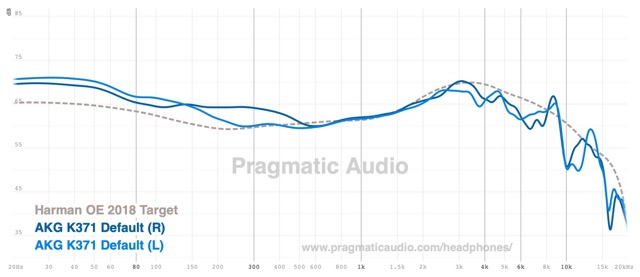 As you can see there is a little channel in-balance 200hz and 400hz and this was common is other measurements I have
seen, but when listening to a sweep in this region I could not hear this in-balance. The other obvious thing from
this graph is the extra bass - this was one area where I did lower with my EQ recommendation, but if you like good
deep bass this would be a great headphone for you.
As you can see there is a little channel in-balance 200hz and 400hz and this was common is other measurements I have
seen, but when listening to a sweep in this region I could not hear this in-balance. The other obvious thing from
this graph is the extra bass - this was one area where I did lower with my EQ recommendation, but if you like good
deep bass this would be a great headphone for you.
Distortion
Distortion doesn’t show anything unusually especially measured at 100db:
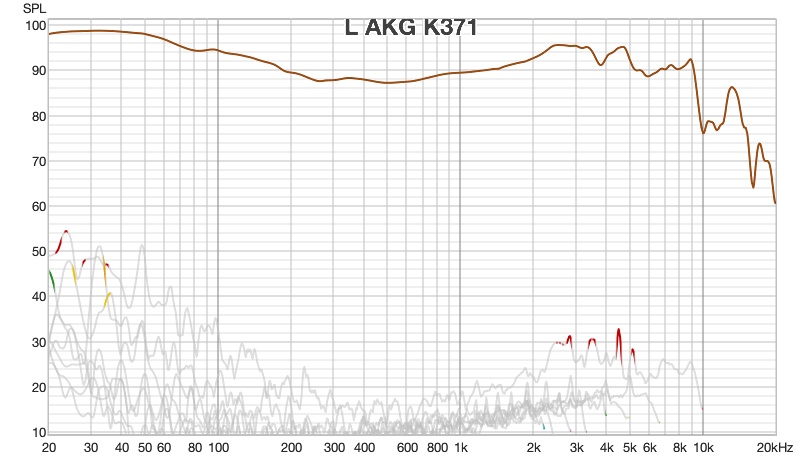
FR Comparisons
For a quick comparison here are 2 other closed-backs that I like in this price range of $100-$200:
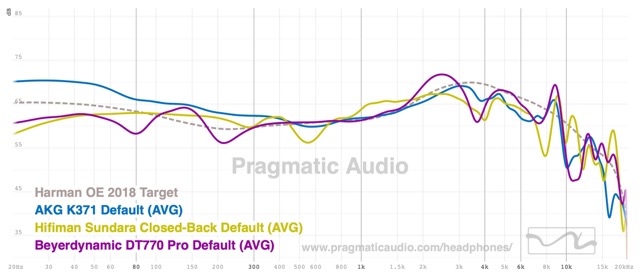
You can see that the K371 matches the harman target across the whole range, that said with EQ I prefer the Sundara Closed back for its larger earpads and its design and I love the Beyerdynamic for its comfort and the pleasure of hearing that ’extra detail’ at least for short listening sessions.
FR Comparisons with the K361
I mentioned in the introduction that I decided to go for the ’extra’ bass version of these 2 variations (K361 or K371) of the same headphones. If I knew what I know now I would actually go for the K361, I believe that slightly less bass is more neutral at least to my tastes.
Here is a FR graph comparison the 2 models from the german website lowbeats.de to hopefully give you a sense for the differences in the bass region:
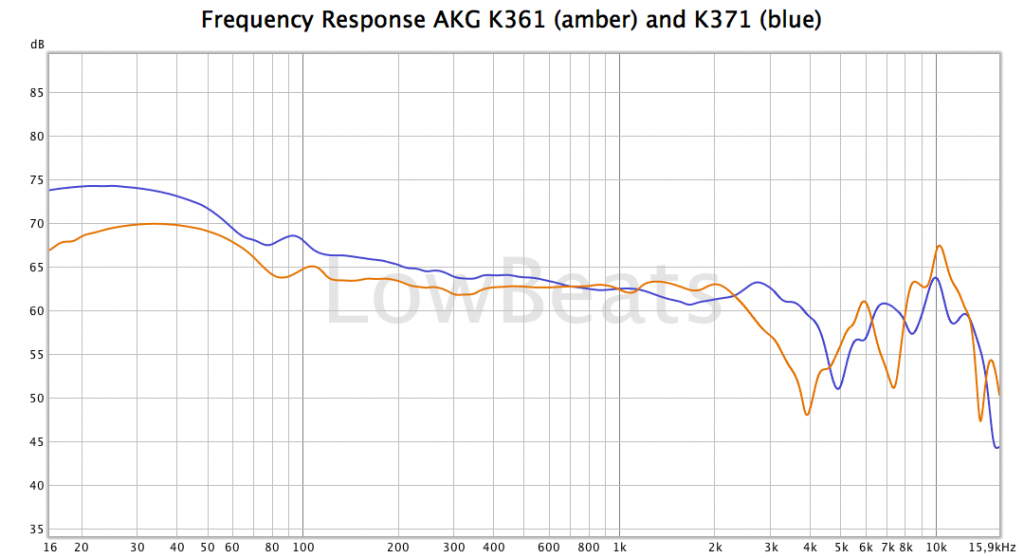
EQ Recommendation
My personal preference for a headphone target is slightly less bass than the K371 therefore for me, I would typically apply a simple low shelf filter to move the bass down 3db below 380Hz
Preamp: -0.2 dB Filter 1: ON LSC Fc 380 Hz Gain -3.0 dB Q 1.000
This results in the following frequency response chain:
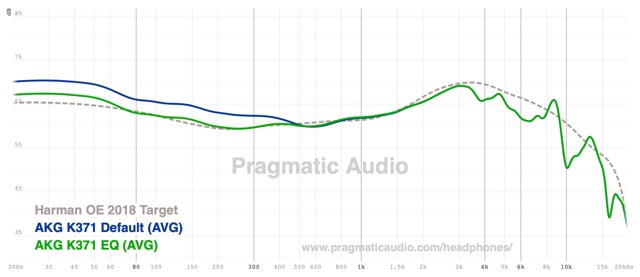
Rating
I gave the AKG K371 a pragmatic 4 stars, in hint sight, I believe the K361 maybe would get a 4.5 rating as it would be nearer my preference without EQ, my only other ‘complaint’ is really the that connector can cause the cable to rub up against my shoulder but as far as build quality, general sound quality and price this is an amazing headphone and worthy of Dr Sean Olive extensive research. It is also worth considering that you might get some treble inconsistencies with the K371 so a little EQ might be needed even if you are a fan of the K371 bass.
Summary
While the enhanced bass response is appreciated for adding warmth and depth to tracks, it may, for some listeners, tip the scales slightly away from neutral, leaning towards a more bass-forward presentation than desired. This characteristic, although a boon for bass enthusiasts, could be seen as a departure from absolute neutrality, marking a minor deviation from an otherwise stellar auditory experience.
Beyond sound, the K371’s design, comfort, and included accessories underscore AKG’s commitment to delivering a comprehensive package that balances professional needs with everyday usability. The thoughtful inclusion of three detachable cables and the plush feel of the pleather ear pads amplify the user experience, emphasizing flexibility and long-term comfort.